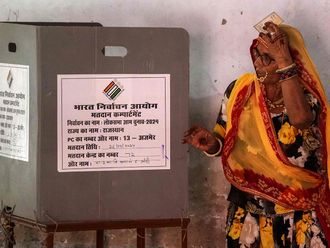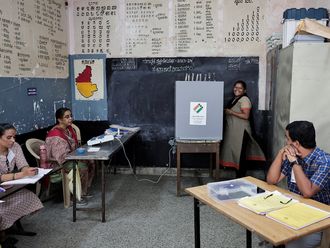
December 16, 2011 will be a day fondly remembered by all NRIs worldwide as it was the day the Reserve Bank of India deregulated interest rates for Non-Resident (External) Rupee (NRE) Deposits. Banks in India immediately hiked their NRE interest rates. The weakening of the Indian Rupee further provided an impetus for NRIs in the UAE to remit money to India at attractive rates thereby gaining not only from the interest rate rise, which currently is in the range of about 9.5 per cent to 10 per cent per annum, but also realising more rupees in conversion. The dirham-rupee rate has gained 14.5 per cent in the last one year, making current dirham-rupee rates of about 13.9 quite attractive for people to remit their savings to India. Non-Resident Indian (NRI) fund inflow into Non-Resident External (NRE) deposits in the month of January 2012 touched $1.6 billion (Dh5.8 billion), the highest in the last ten years.
The concern most NRIs have now is, "Whether these rates, both exchange rates as well as term deposit rates, are sustainable" Clearly, in terms of interest rates, the RBI has professed that growth gains pre-eminence over inflation control, implying a departure from its hawkish stance and that it will soon embark on a softer interest rate regime. When commercial banks can borrow at lower rates from the central bank, they will start dropping interest rates on deposits. So, if you are looking at booking a term deposit, the time is now to lock in the rate for as long a tenor as you can. However, a declining interest rate market throws up another opportunity namely debt, both government and corporate. As interest rates fall, the prices of bonds rise. Therefore, it is a good time to invest in bonds as well — these are periodically on offer including some infrastructure bonds with an attractive tax free component.
The situation with exchange rates is far more complex. While the liquidity steroid provided by central banks worldwide, recently buffeted by the ECB's release of more than €1 trillion (Dh4.8 trillion) through LTROs I & II, may guide some FII funds into India as well, the balance of payments deficit far outstrips these capital inflows, thus far. A point to note here is that FII inflows of over $9 billion in the first three months this calendar year have hardly had a perceptible impact on the exchange rate. There does not seem to be a unidirectional trend but it appears that an exchange rate of Rs50 (Dh3.5) to the dollar is the new pivot and that the rupee will trade around this pivot. The extreme volatility witnessed in the recent past where the dollar-rupee fell from Rs44 in early August to over Rs54 on December 14 and then bounced back to Rs49 in early February does not seem sustainable. So the time to remit is really when you have funds to remit!
Equity markets in India have also had their fair share of swings, the Sensex moving from one of the worst performing indices last year to one of the best performing year-to-date. However, benign interest rates should set off in motion a virtuous cycle of lower borrowing costs, higher profits, greater dividends, larger flows into the market through FDI and FII, stronger currency, lower inflation and therefore lower interest rates. At least, in theory. The fact is, with estimated GDP at 6.9 per cent and inflation at 6.95 per cent, nominal growth is at close to 14 per cent this year so, despite the looming clouds of fiscal deficit, slackening growth, high input prices, there is a ray of hope.
The other asset class which is a darling of the NRI community is real estate. Not only are there real estate funds but there also are a fair number of direct property deals, including pre-leased properties, which NRIs are actively evaluating. Truly these are interesting times for NRIs and well-informed investment decisions could yield desired outcomes across liquidity, capital preservation and appreciation.
— The author is CEO, Kotak Mahindra Financial Services Ltd, Dubai













